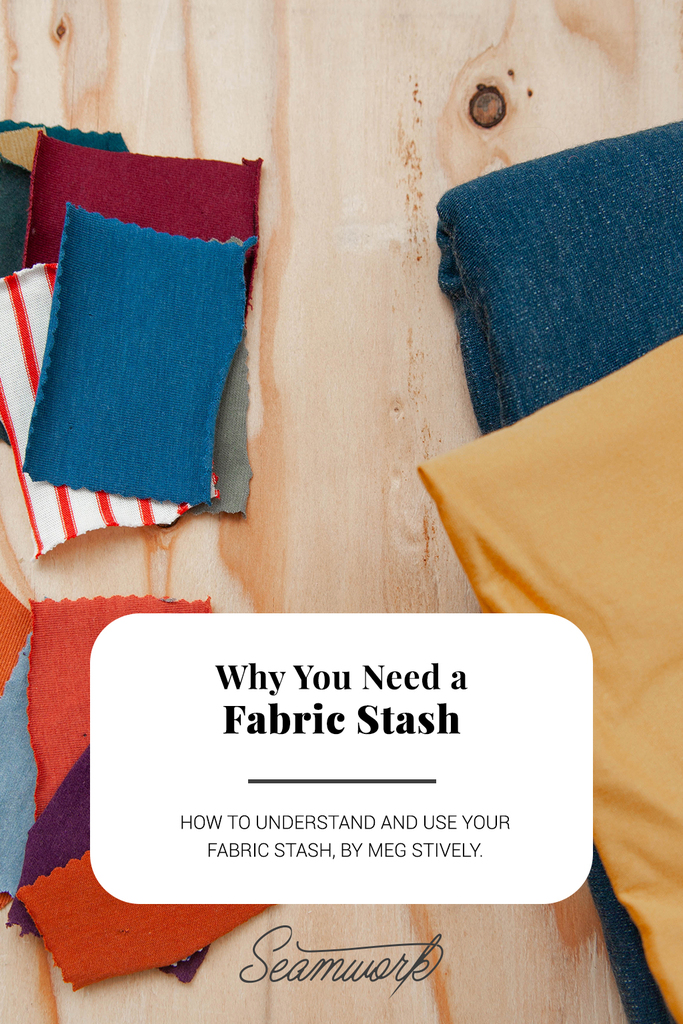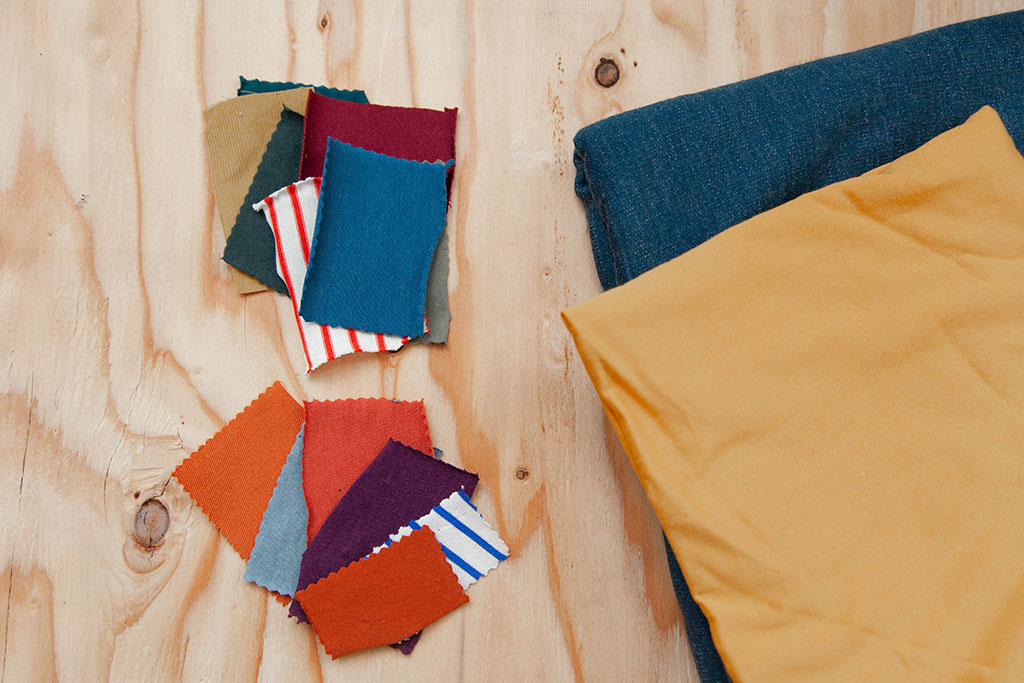
My grandma had a sticker in her sewing room that said, "She who dies with the most fabric wins." After she passed away, I inherited the sticker, and it now sits proudly on top of my fabric stash.
We all have fabric stashes. They vary in content from a few yards intended for an upcoming project, to plastic storage bins stacked in a corner, to a mini fabric shop with all notions displayed as well. Stashes serve an important purpose, so while you'll often read about "stash-busting" projects, it's essential to understand your stash before you try to bust it.
In this article, we'll explore the art of fabric stashing, to learn how to balance your stash so that it reflects your sewing goals and doesn't distract you from them. For some, this might mean a few months of active stash busting, and for others, it might be learning to embrace your collection without any shame. So let's dig into those stashes, and by the end of this article, you'll have 10 new tips for working with your fabric collection.
Why a Fabric Stash is Important
There can be shame or embarrassment when we talk about our stashes. I've even chatted with some sewists who keep boxes of fabric hidden from their partners, stored in a quiet corner of the basement in a box labeled Halloween Decor.
Why do we feel this shame? What is it about a fabric stash that makes us feel guilty? Let's start by exploring some of the reasons why a fabric stash is healthy and meaningful, and really take these ideas to heart, before we even talk about stash busting.
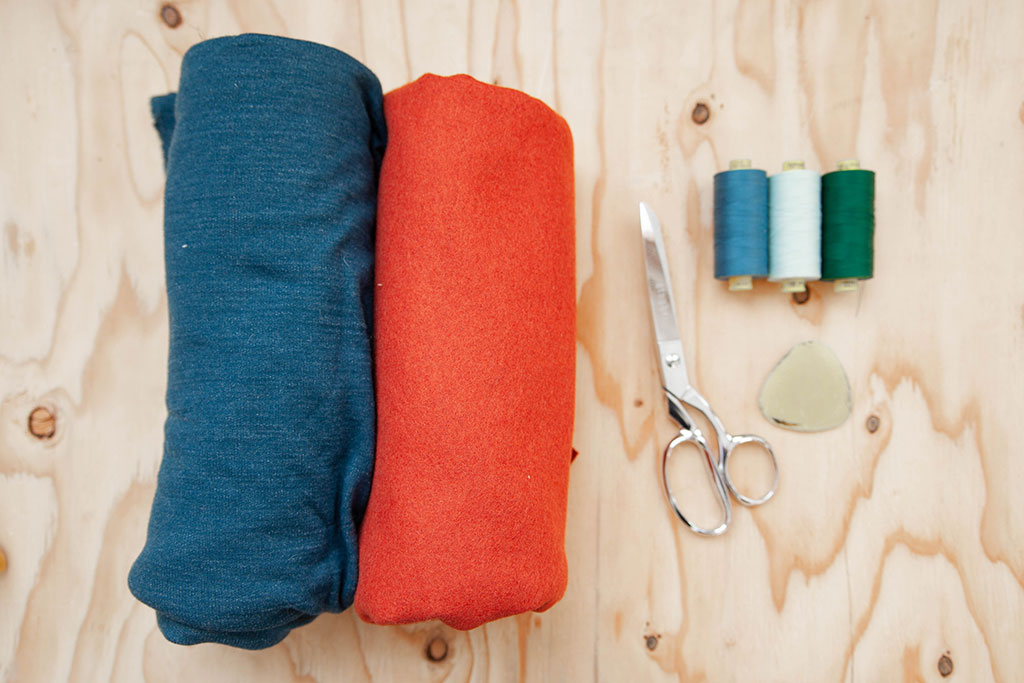
An artist needs their tools—you're building a wardrobe!
An artist needs tools. You're building a wardrobe! You will eventually be wearing your stash, so it's not only a source of inspiration but a powerful form of self-expression. Artists rely on color palettes, books, and all sorts of specialty supplies to create their art. Sewing is no different. Many projects start with fabric, but not all of them, so the next time you feel some guilt about the four extra yards that begged to come home with you, remember that your fabric is probably one of the most important tools for your craft.
You draw knowledge about your craft from your fabric stash. You can go to school to study textiles, but you can also start with your stash and take the time to research all the different fabrics you own, including how to care for them, how to sew with them, how the fabric wears, and the best garments to make with that fabric. If you spend time learning about a different fabric each week, in a few months, you can assemble your own swatch and textiles book, full of information for when you are ready to sew.
Your fabric stash shows you the possibilities for your wardrobe, at a glance. Having your fabric at arm's reach makes it easy to jump into a project when inspiration comes in the middle of the night, or wake up in the morning and start sewing before work. It's also great for wardrobe-building. You can audition fabric from your stash to pair colors and textures together to make coordinating pieces. You can also audit your tastes at a glance. If you find you aren't sewing from your stash or your style has changed, you can edit your palette and let go of any fabric that isn't resonating (we'll cover more about saying goodbye to fabric later).
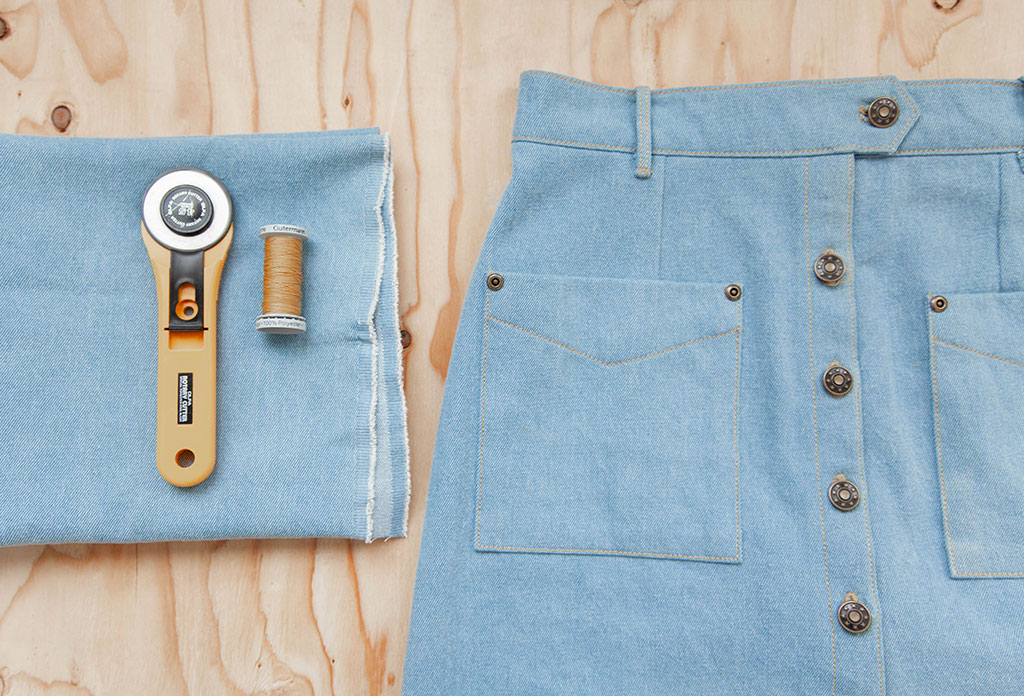
Having fabric on hand means you are ready to jump into a new project ASAP.
Finally, your stash is valuable because it roots you to the sewing community. We all love fabric shops, whether local or online, and fabric shopping allows you to reach out to others. Supporting independent fabric stores can help you discover classes, the shop owners can encourage you to try new fibers or help with questions, and if you share your projects, you'll probably be asked, "where did you get that fabric?" and we all love the affirmation that we have good taste.
Some Fabric Stash Pitfalls
If you have a large fabric stash, or if your fabric stash is making you feel stressed instead of inspired, there are some pitfalls to consider. When it comes to the concept of "stash busting," you should pay attention to busting versus utilizing. Are you sewing projects that you love, that make you feel proud when you wear them? Or do you feel limited by your stash? Do you reluctantly reach for your stash out of guilt, or do you have confidence in all the fabric you've purchased?
When we spend an afternoon working with our stashes (keep reading), pay attention to the percentage of fabric you love versus the amount that you aren't into. If you're busting your stash just to use up fabric that doesn't make you feel good when you wear it, that fabric might be better off with someone else. If you bust your stash by making a bunch of wearable muslins, maybe your stash could benefit from some fabrics that make you really excited to sew a final piece.
Shopping vs. sewing. One of the biggest pitfalls of a large stash is the time spent shopping versus sewing. Be honest with yourself, do you ever fabric shop because you are putting off a project or feeling stuck? Retail therapy in a fabric store is healthy and amazing, but not if it's taking the place of sewing. Unless you only want to acquire new fabric—and, hey, no judgment there—take a few minutes to think about your fabric shopping habits, and if they really make you feel energized to sew. If not, how can you change that?

Does this stress you out? If your fabric stash isn't stored correctly, it can lead to stress rather than inspiration.
Money. Then there's the harsh reality of finances. It's a good idea to set a budget for your stash, whether that is monthly or seasonally. Regularly evaluate your budget and track your spending for at least six months. Honestly track your spending—write it down and see how long it takes you to work through all the fabric you've purchased. If there are years between a purchase and a finished project, it might be time to reevaluate.
Space and clutter. Does your stash overwhelm your sewing space? If so, it might prevent you from sewing. Dealing with clutter is largely emotional. It's as simple as cleaning, donating, and finding storage, but sometimes it's hard to get started or maintain the energy to do so. If your stash makes you feel burdened by clutter, you might want to bust your way to a smaller stash.
Pause. What Does Your Stash Mean to You?
Take time to answer these questions before you tackle any of the 10 tips for wrangling your stash below. To respect your stash and bust your stash, you have to understand what your fabric means to you.
-
What relationship do you have to your fabric? Think about your stash, or better yet, go look at it. Do you have more of an emotional reaction or a practical reaction? -
What feelings do you associate with your stash? Pick up your fabric, touch it, remember where you found it, think about what you could make with it. Write these feelings down if it helps. -
Does having a stash motivate you to sew? Think about the last time you sewed a project from your stash. If you aren't feeling motivated or inspired, are you having any negative feelings about your stash? Jot these down. -
Does having a stash inspire new ideas? Do you actually act on these ideas, or do the ideas get stashed, too? If you have nothing but a stash and a list of projects, it might be time to bust your stash and reevaluate your fabric purchases in the future.
10 Tips to Wrangle Your Stash
1. Spend an afternoon with your stash. You can start by simply answering the questions above, or spend some time folding your fabric, cataloging your yardage, or making a swatch booklet. Or, just sit down and admire all of your fabric. No matter what, you want to start by being familiar with everything that's in your stash, so you can fully understand it.
2. Shop your stash first. We say this a lot. It's even how we start the fabric portion of our Design Your Wardrobe Program, so it might be a good idea to turn it into a little motto for starting a new project. Before you head to the fabric store—because, don't worry, you know you will be in a fabric store again soon!—shop your stash first. You might find you have everything you need, or you will at least be aware of the gaps you need to fill.

Spend time with your fabric stash. Make a swatch booklet, organize by color, or neatly fold your fabric.
3. Develop a sewing ritual. This doesn't mean you need to host a ceremony before you start each project, but it's helpful to be aware of your creative practice. We have some tools. Here is an article for creating a sewing ritual and here is another article about the transformative power of rituals. And if you are a Seamwork member, we even have a Progress Club called "The Ritualists" that you can join. It's full of people who have developed sewing rituals. Read their approach on the community forums here.
4. Have a strong project queue. If your fabric stash is chaos, and you have a chaotic approach to planning projects, you are vulnerable to burnout. You can use our Design Your Wardrobe program or our free downloadable sewing planner to create a project queue and plan of attack.
5. Be honest about your style. It's common to be attracted to graphic prints when you only wear neutrals, but you will run into problems if you shop for fabric that doesn't suit your style.
6. Get to know your colors and prints. Do you love the color orange but it doesn't work with your skin? You might benefit from a custom color palette. There's a tutorial for creating a custom, expressive color palette in issue no. 6 of Seamwork. Once you have your colors, think about the prints that make you feel confident, not self-conscious.
7. Identify your favorite textiles. When you first started sewing, you might not have paid attention to your fabric contents and considered their breathability, aftercare, and comfort. As your sewing skills grow, so does your knowledge about textiles. Take a look at the garments you wear the most and make a list of the types of fabric that suit your style and your comfort. Next time you are at the fabric store, put this knowledge to use and only shop for the textiles you love to wear.
8. Understand your yardage needs. If you find a fabric you love, but you don't have a project for it yet, how much yardage should you buy? There's no exact science, although many sewists swear by three yards, as a rule, so feel free to go with that. You can also think about the types of garments you sew the most. If you sew more shirts than dresses, you can get away with less yardage. You can also think about how you might best use your fabric. If the fabric is a coating, be sure to buy enough for a coat. If you don't have concrete plans for an expensive silk, maybe just get enough for a tank top.
9. Identify your stash busters. After answering some of the questions above and thinking about some of the pitfalls of a large fabric stash, you might find yourself ready to bust your stash. Make some projects you've been eyeing, sew some muslins, or search for stash-busting patterns. A few qualities that make a good stash buster include a pattern that requires less yardage, a pattern that can be made in both wovens and knits, patterns that can be made with contrasting fabric, or your tried-and-true patterns that you want to make over and over.
10. Make your stash look nice. Finally, embrace the art of folding! Consider how you want to store your fabric, download an app for cataloging fabric, browse Pinterest for fabric storage ideas, pop into your local fabric shop to see how their fabric is displayed, watch this video to learn how to fold fabric into a neat square, or arrange your fabric by color. If your stash looks nice, you're going to want to spend more time with it.
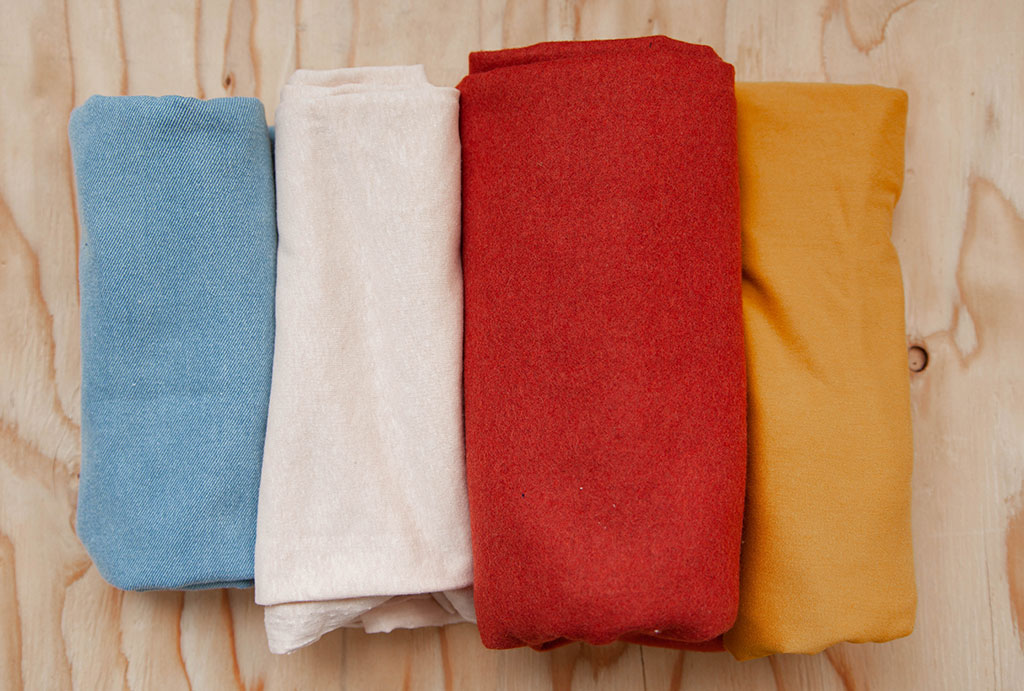
Make Peace with Your Stash
Fabric stashes are necessary—they inspire creativity and keep projects flowing. But it's all about how you manage your stash. If your stash starts to make you feel off-balance, revisit some of the questions and tips above to evaluate your current relationship with your stash.
Want to talk more about fabric stashes? Join the conversation on the Seamwork community here. Share a picture of your stash and chat with other sewists about how they wrangle their fabric.
One last tip is to get comfortable saying goodbye to your fabric. Rather than making clothing from fabric you don't love, find someone who does love that fabric! Host a swap, have a de-stash on Instagram and make some money back, donate your fabric to a school or charity, or send a sewing pal an unexpected present in the mail. If it's hard for you to say goodbye to fabric, just remember that it's not worth your time and energy to make something if you don't love the way the fabric looks or feels.
In the end, you have two options: you can tend to your stash with pride and respect, getting inspiration and motivation in return. Or you can get comfortable with goodbyes and bust your stash until it feels manageable and you spend more time at your machine.
In other words, be proud of your stash, or bust!




